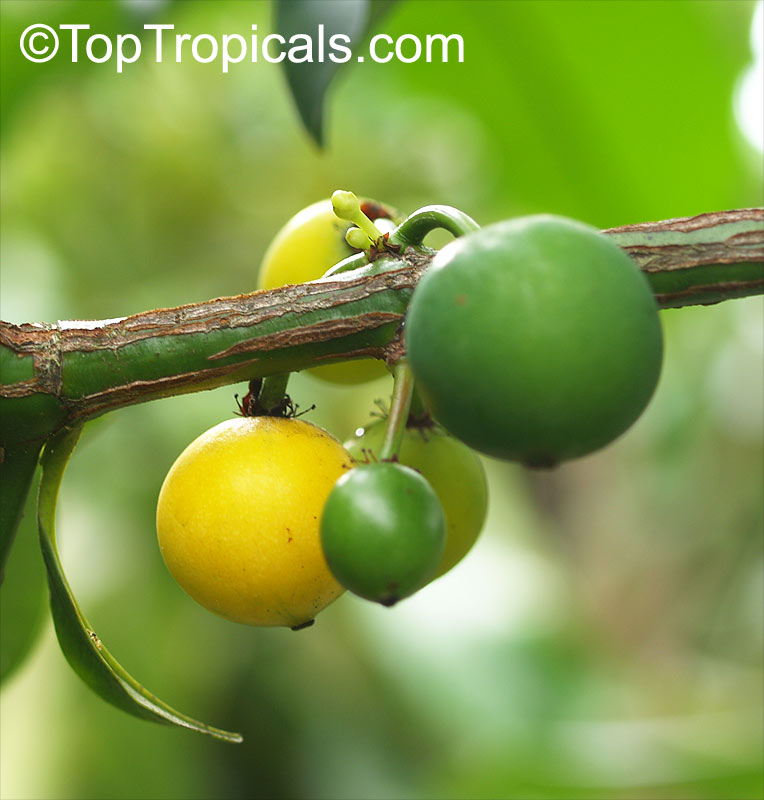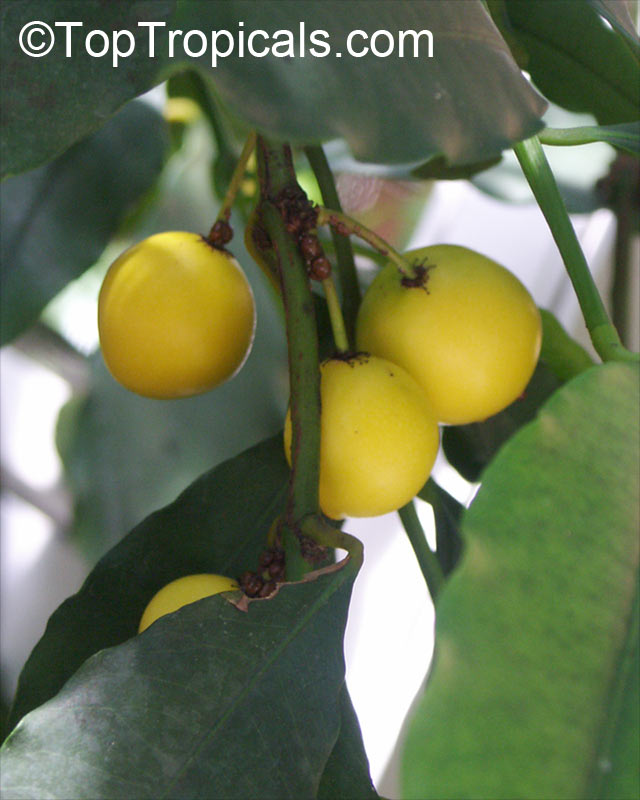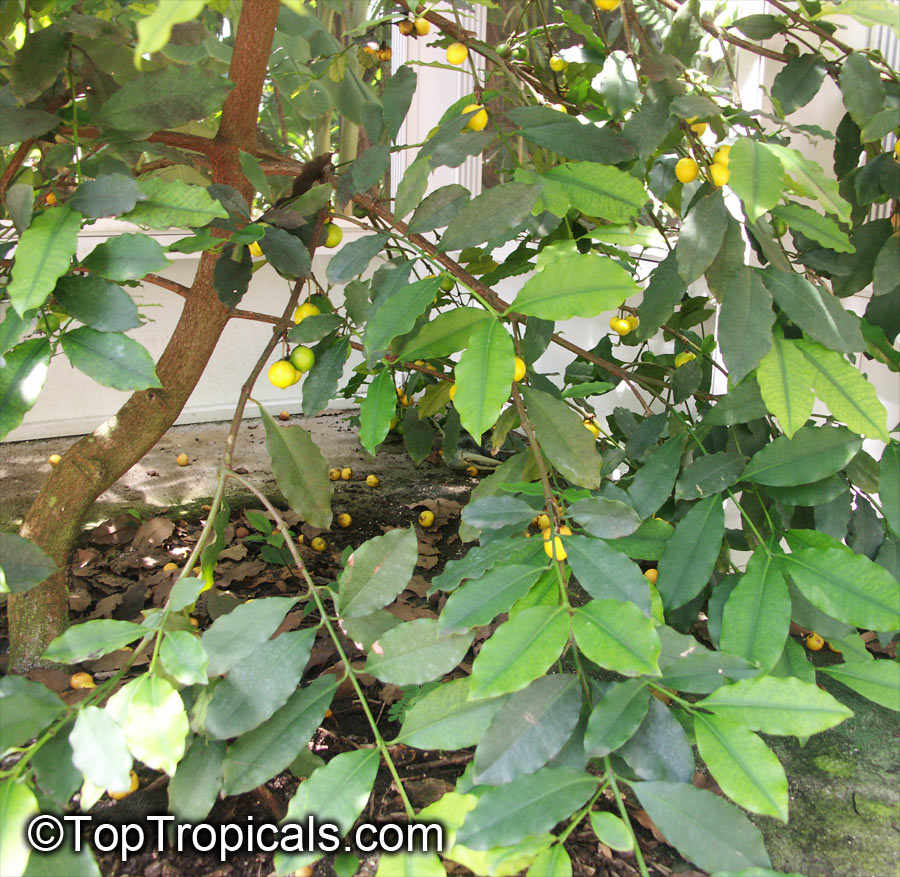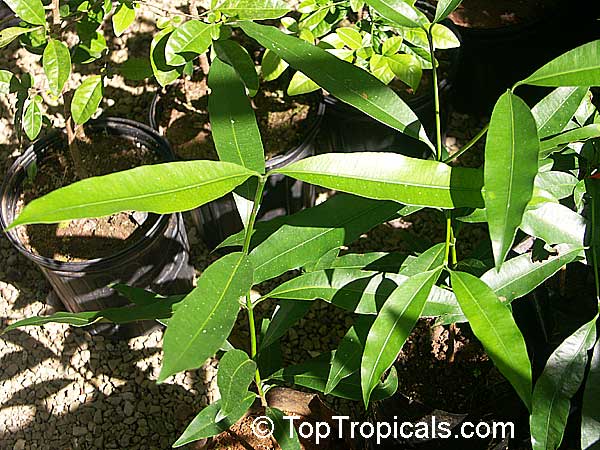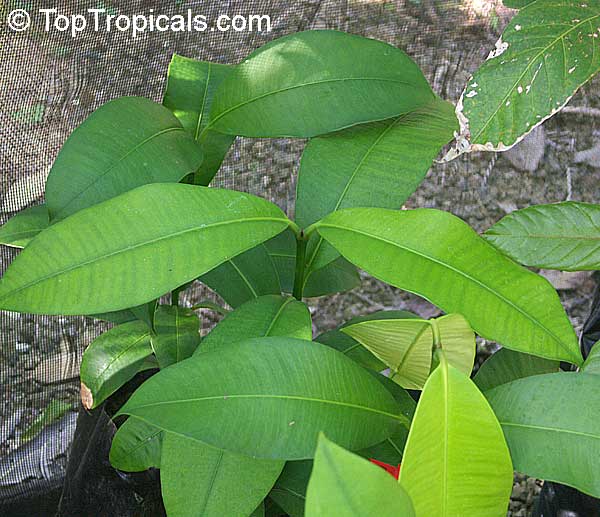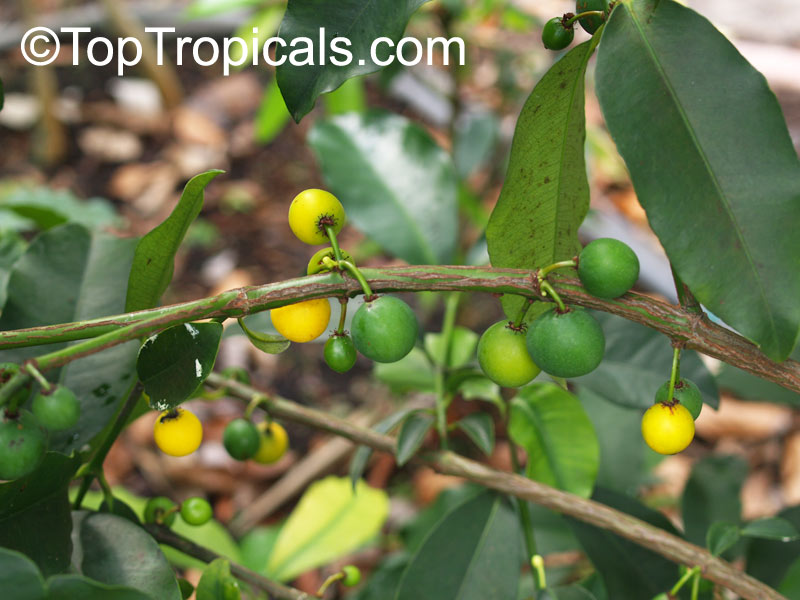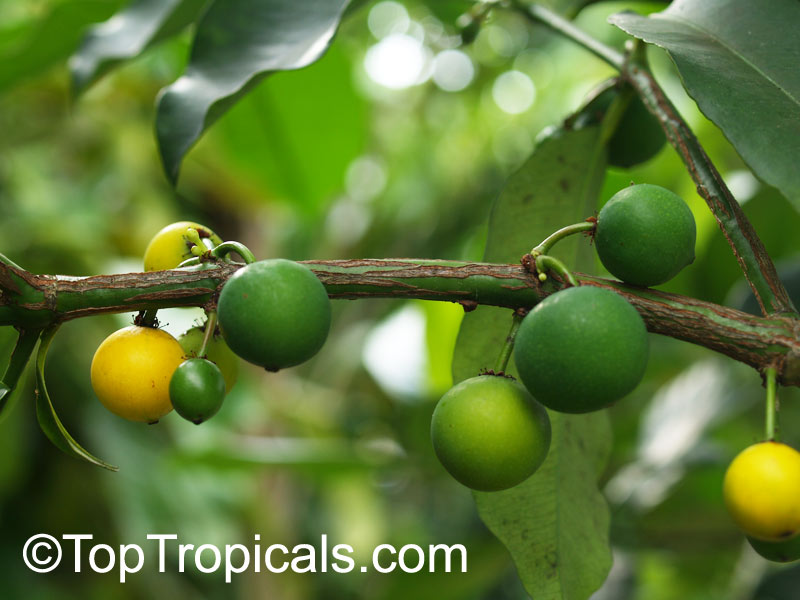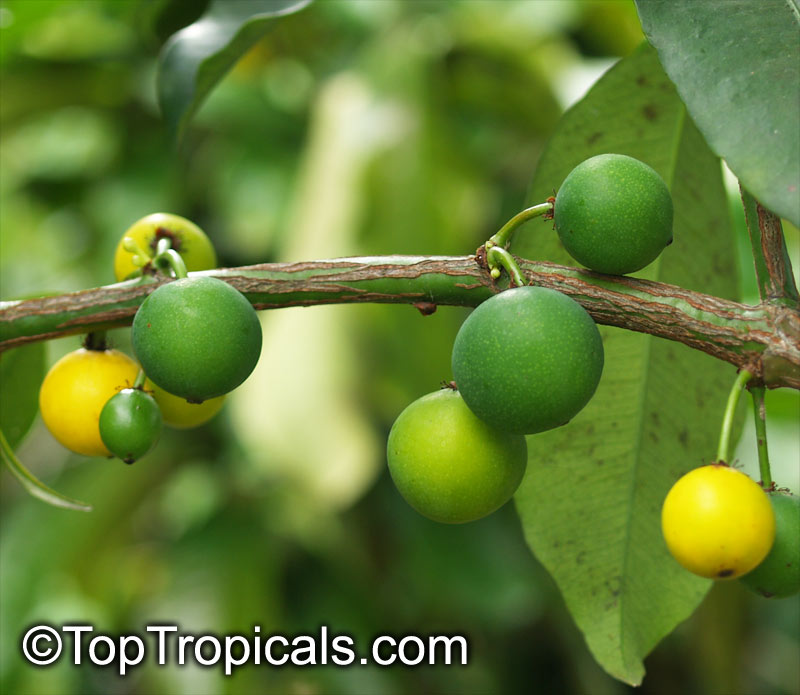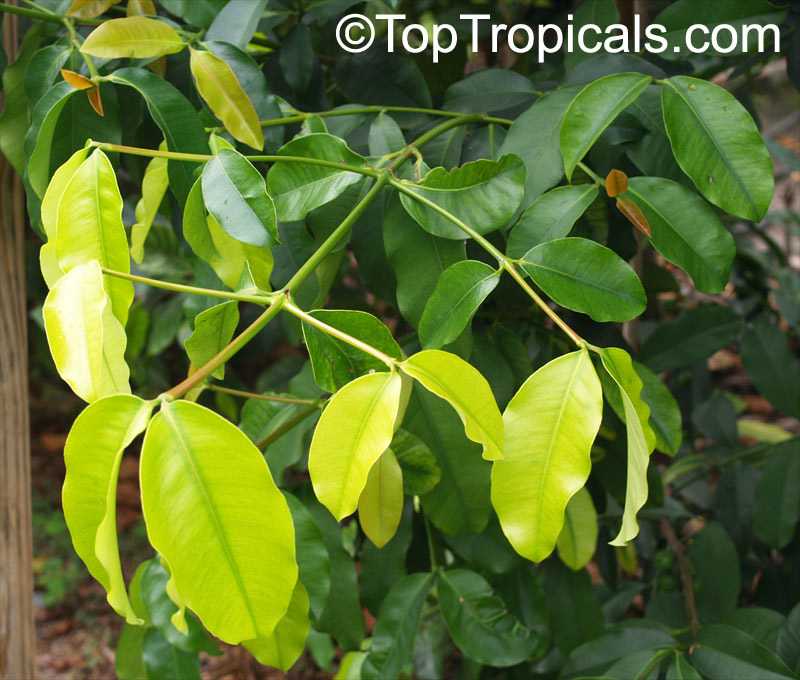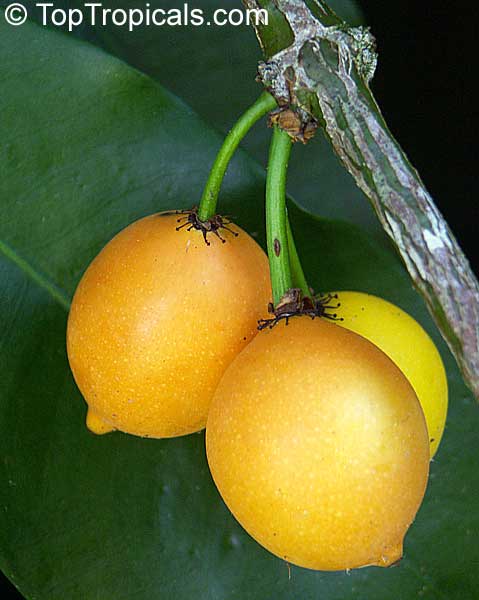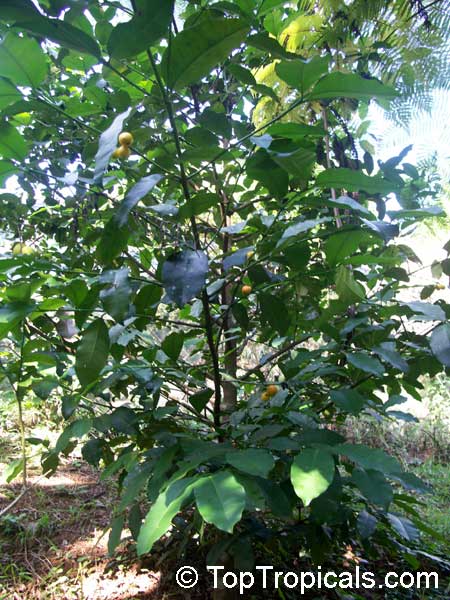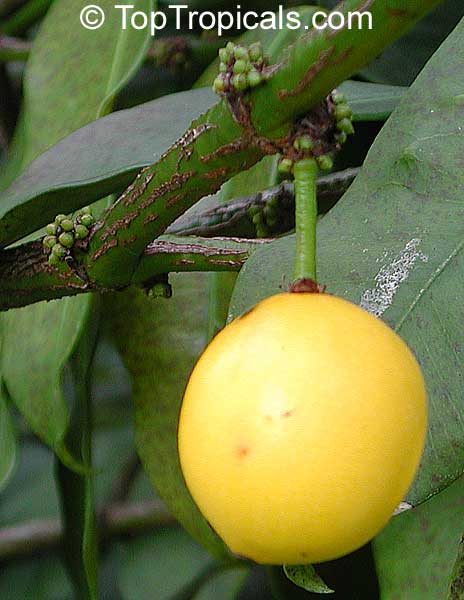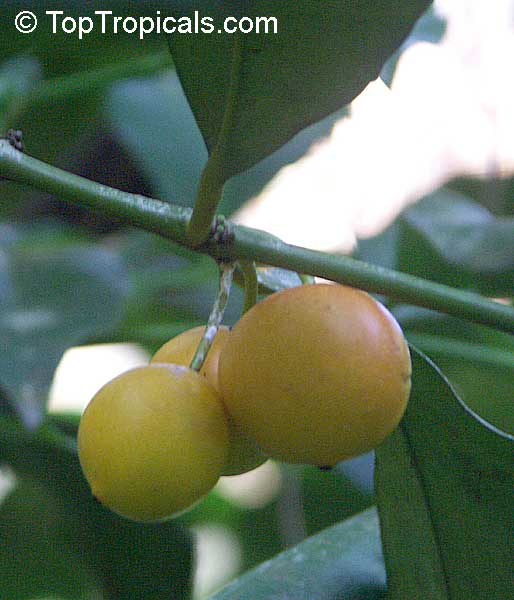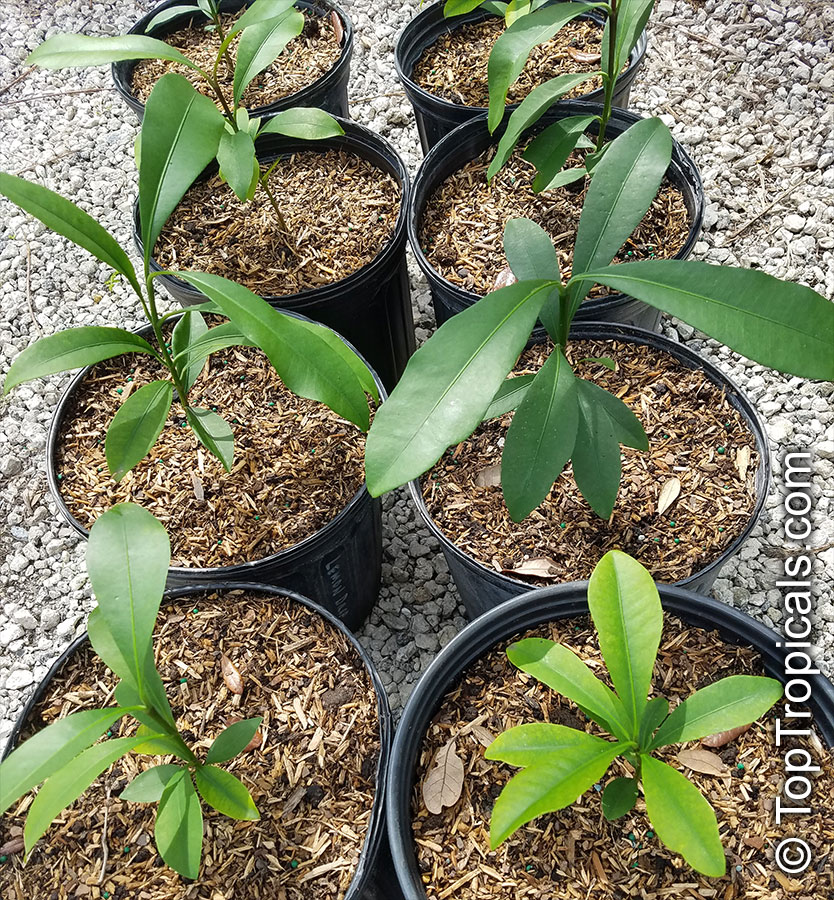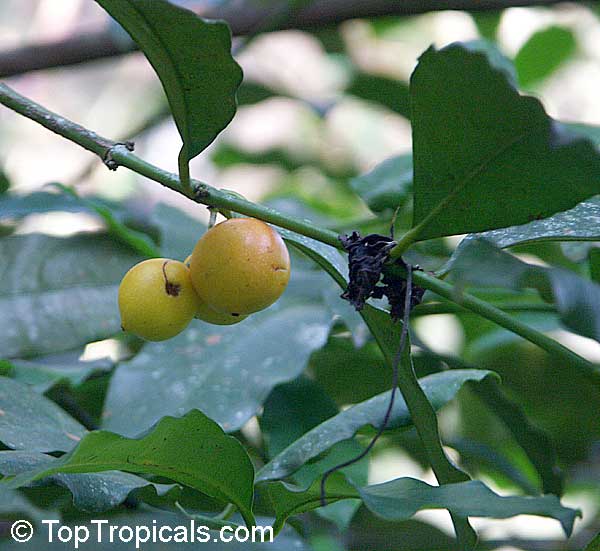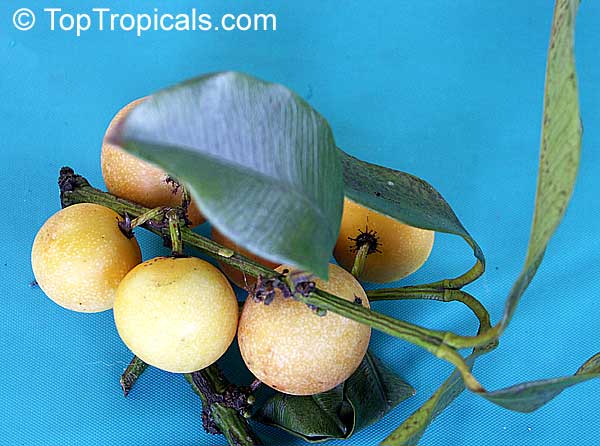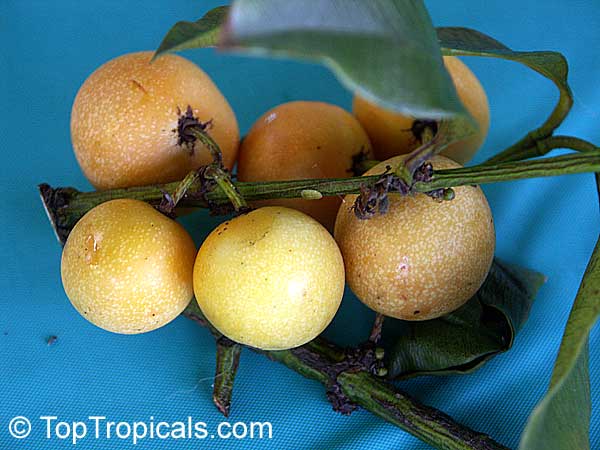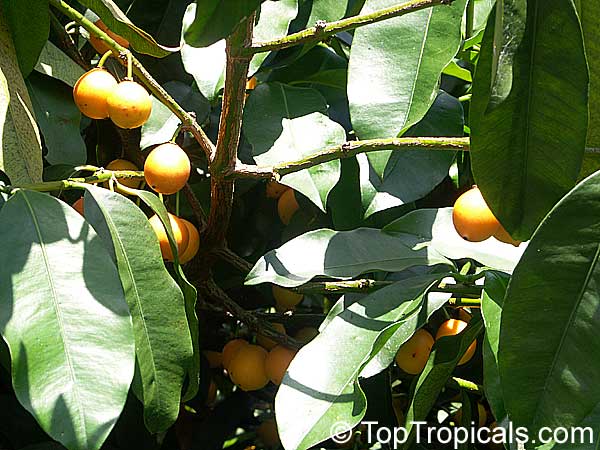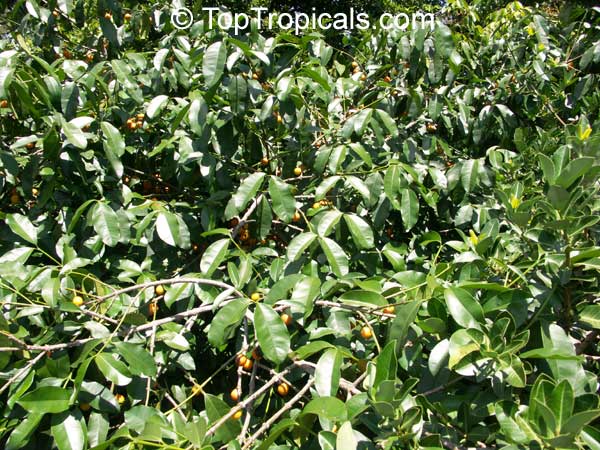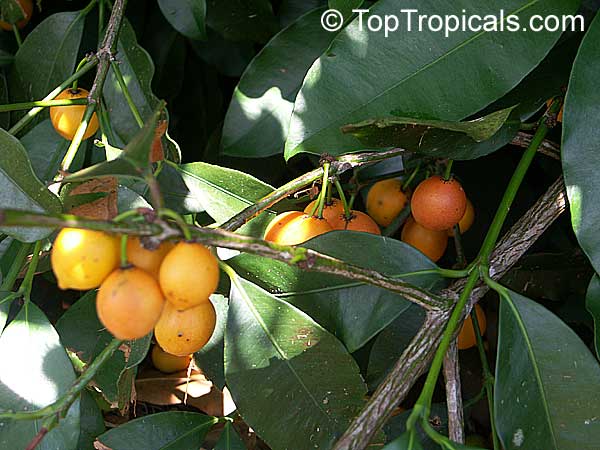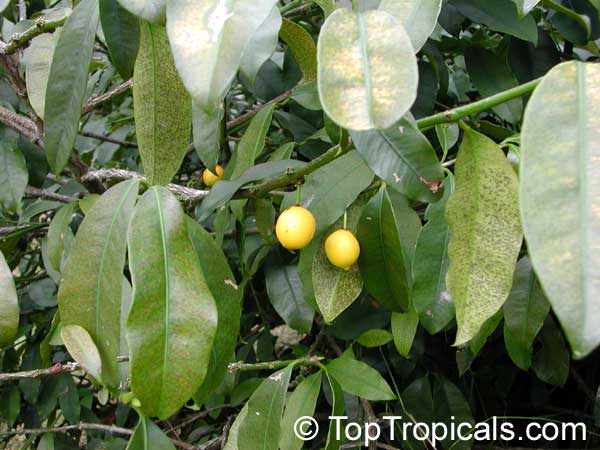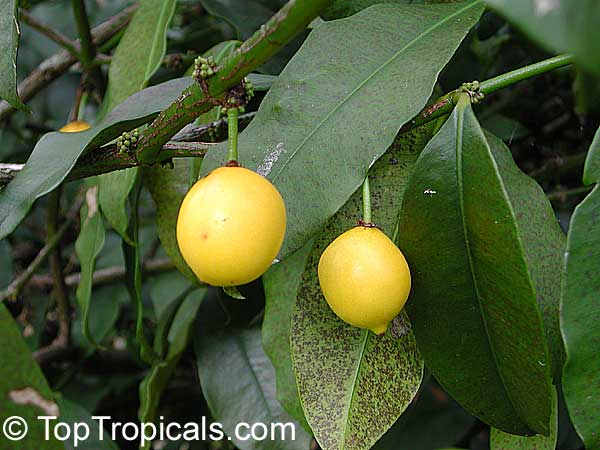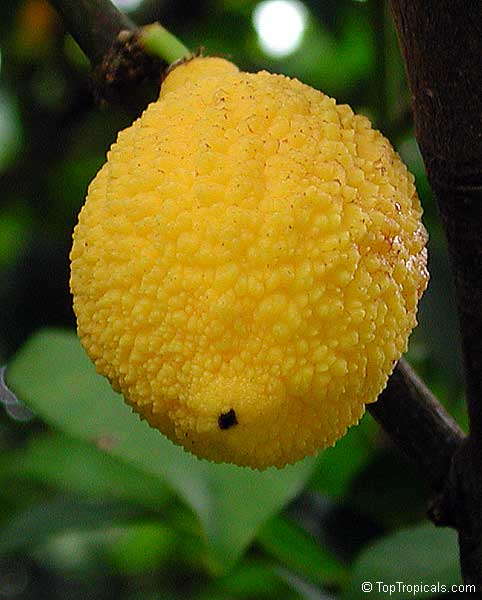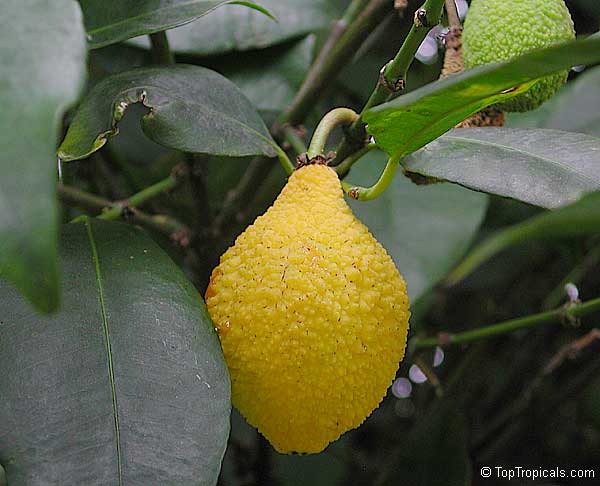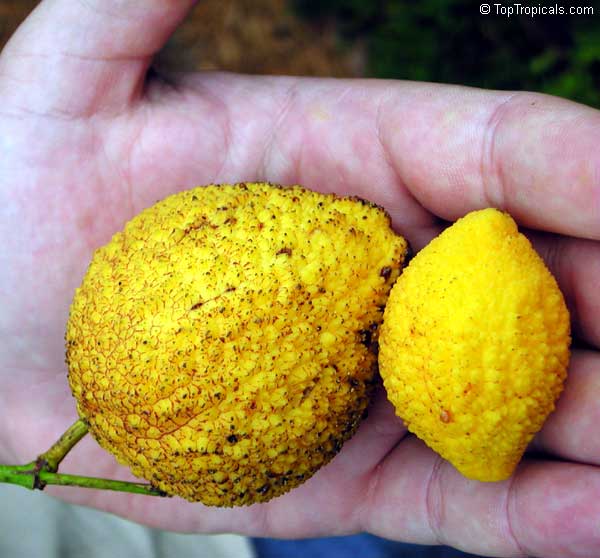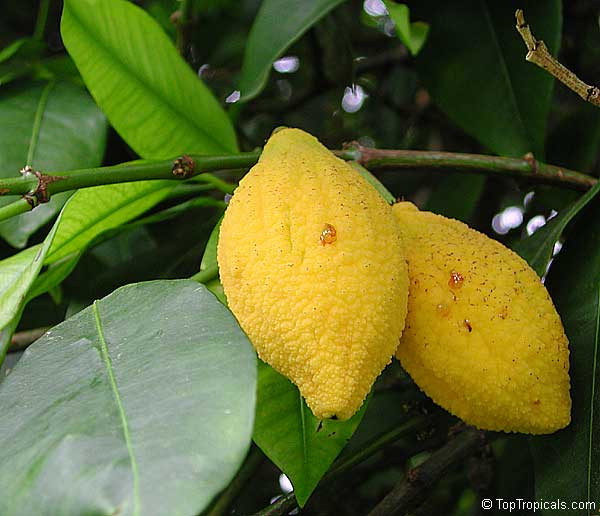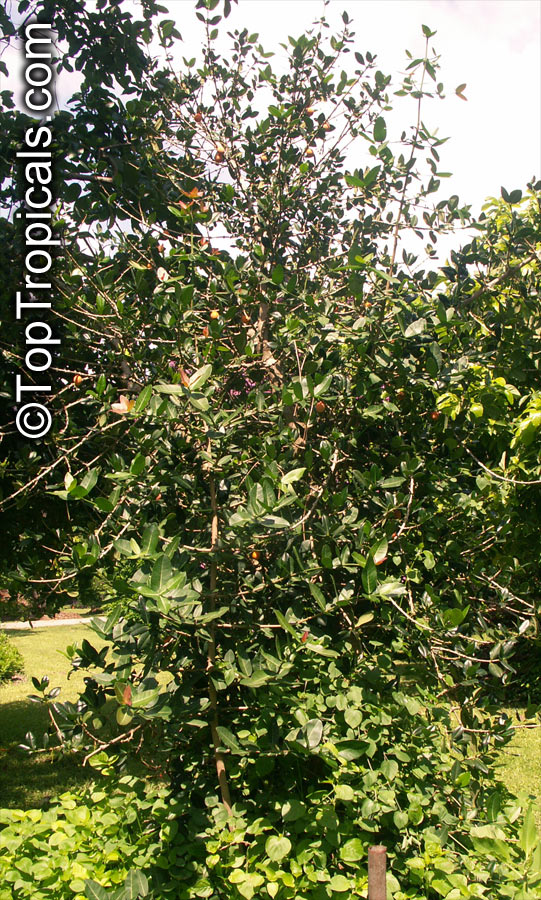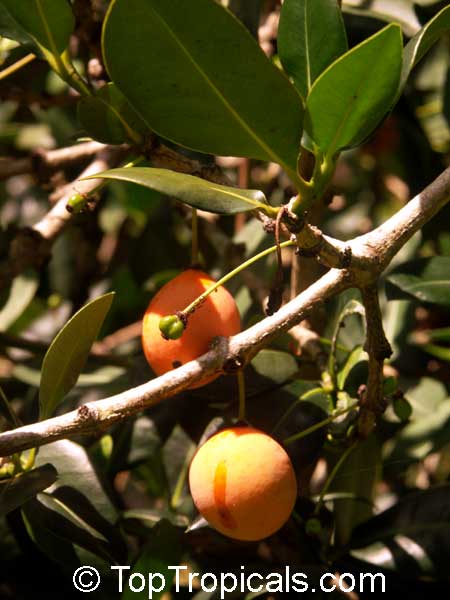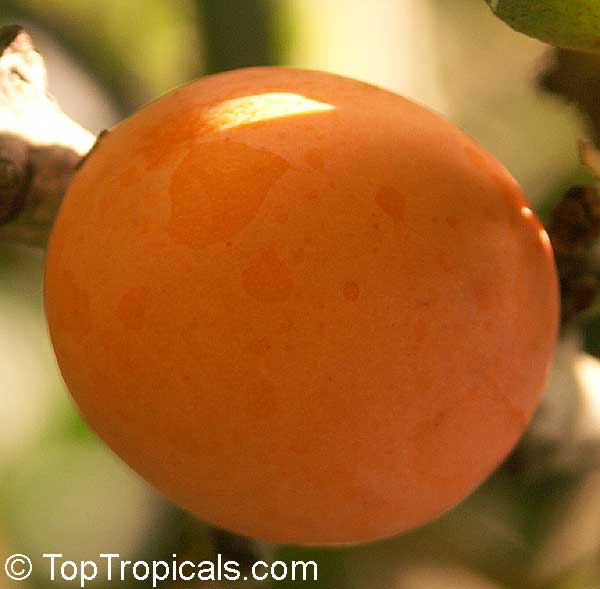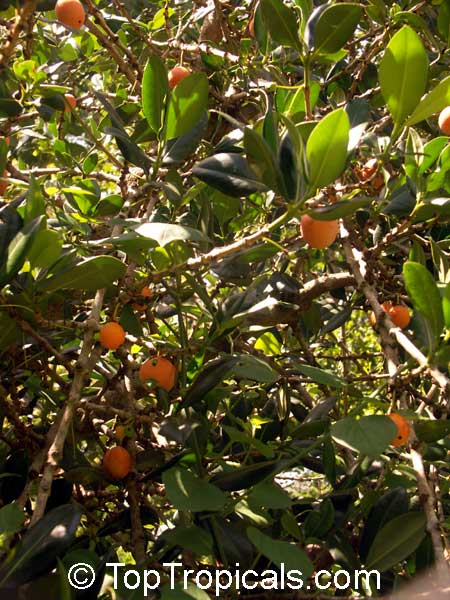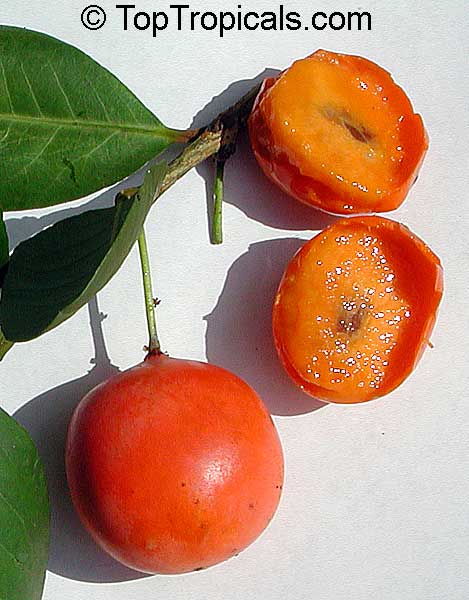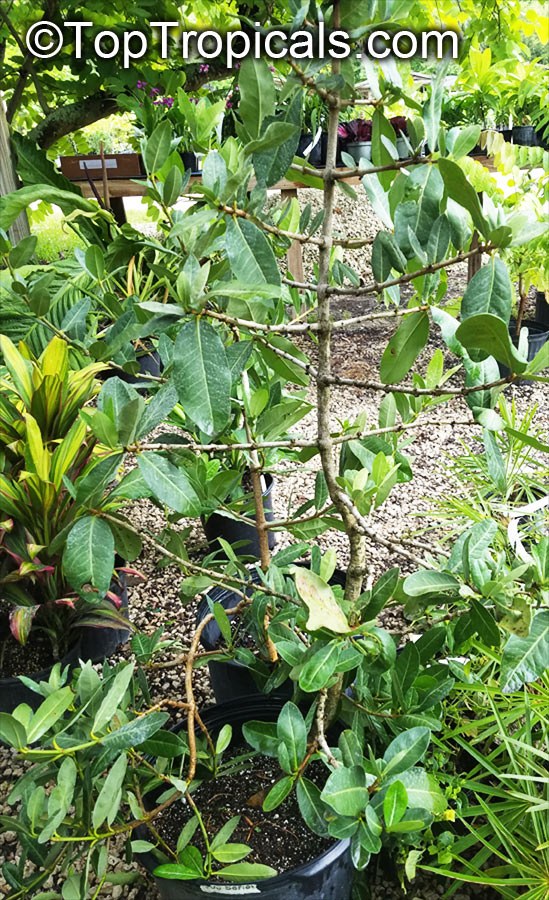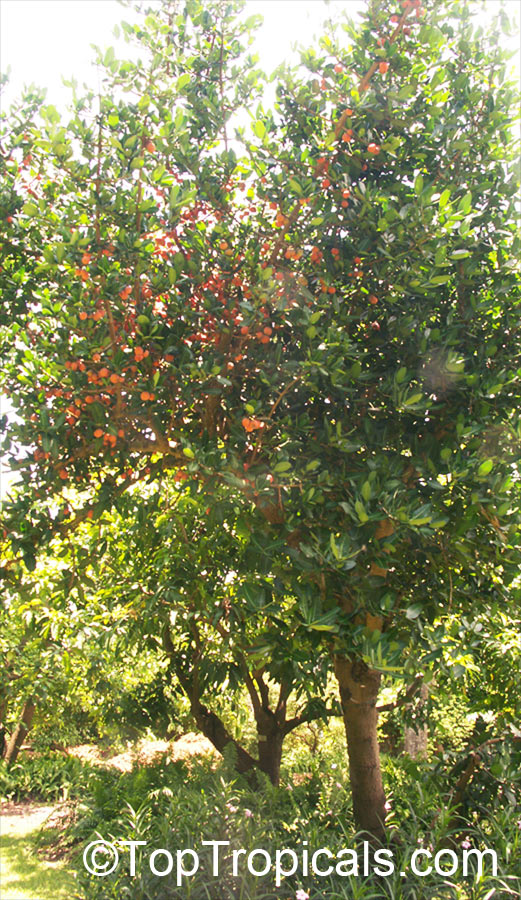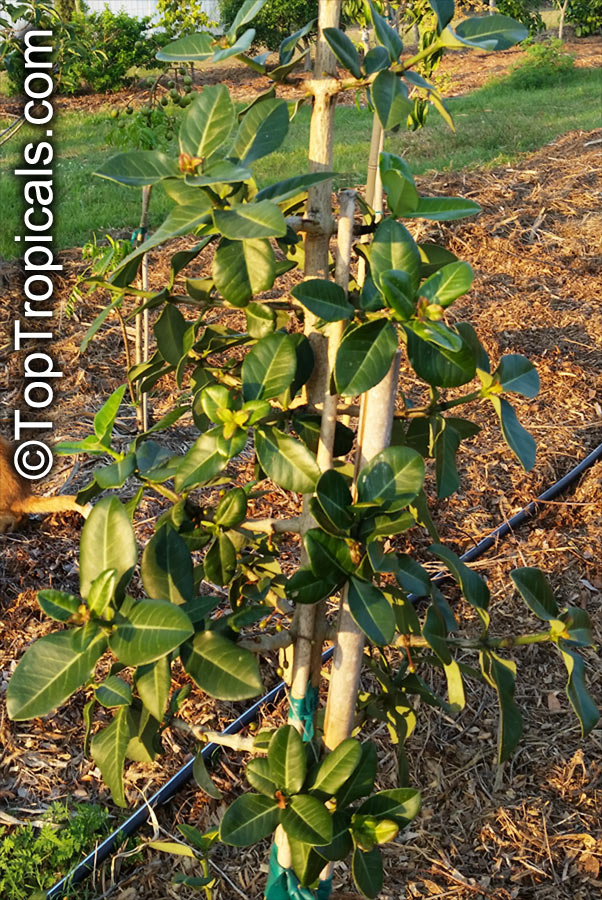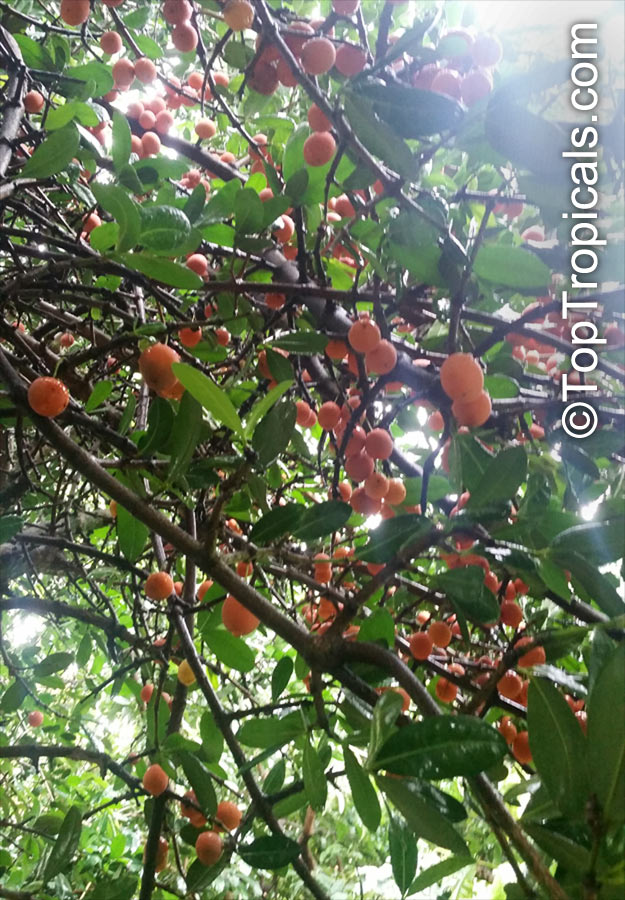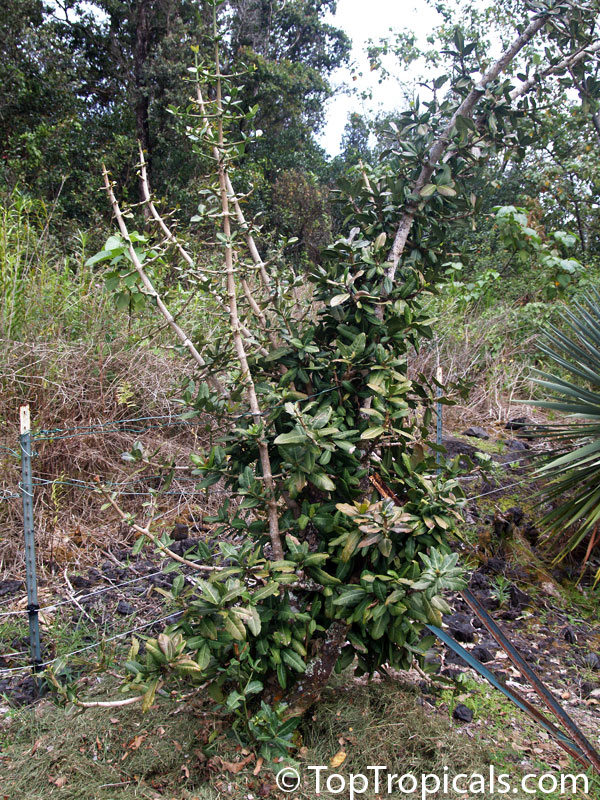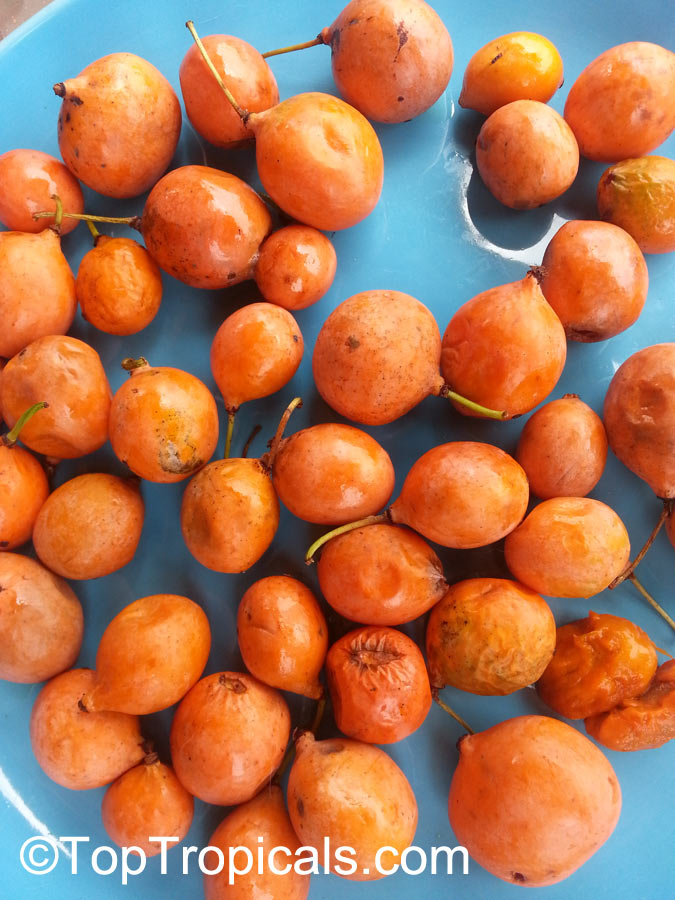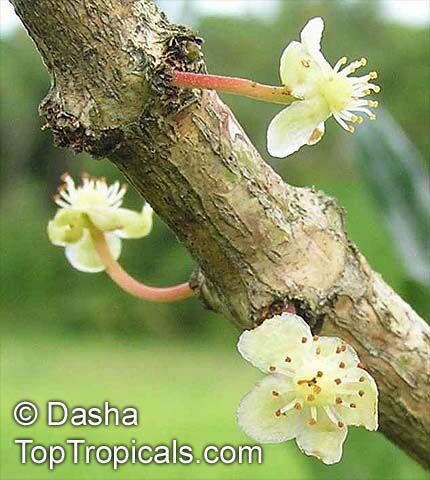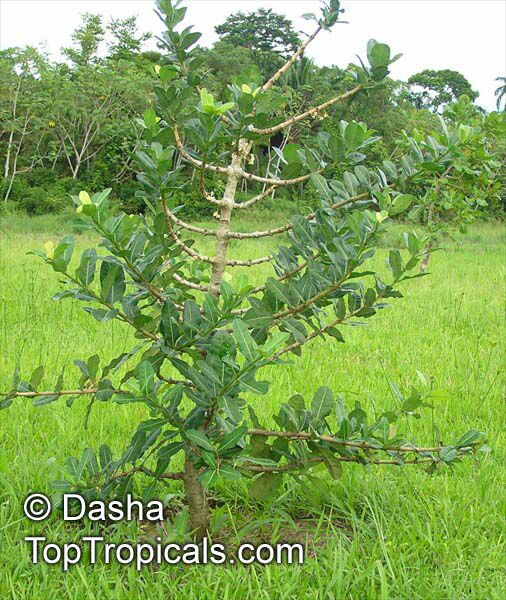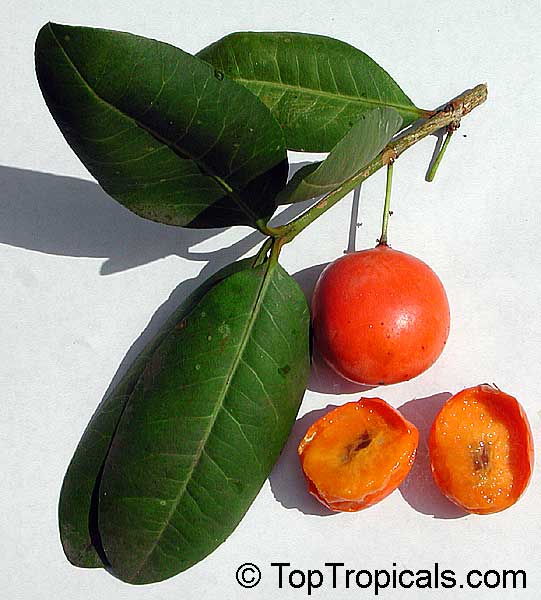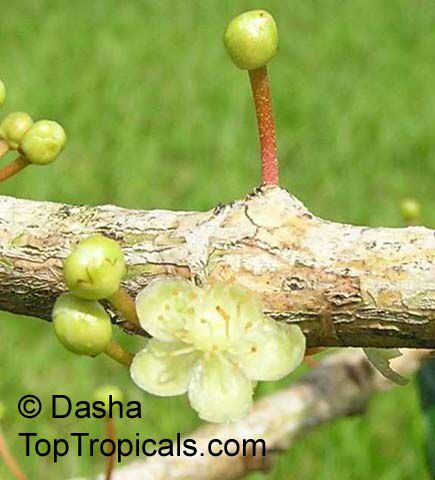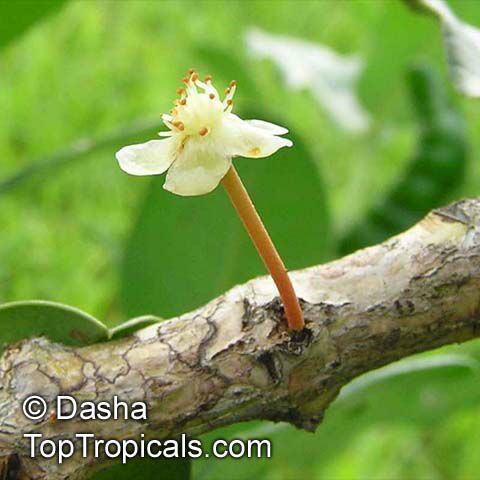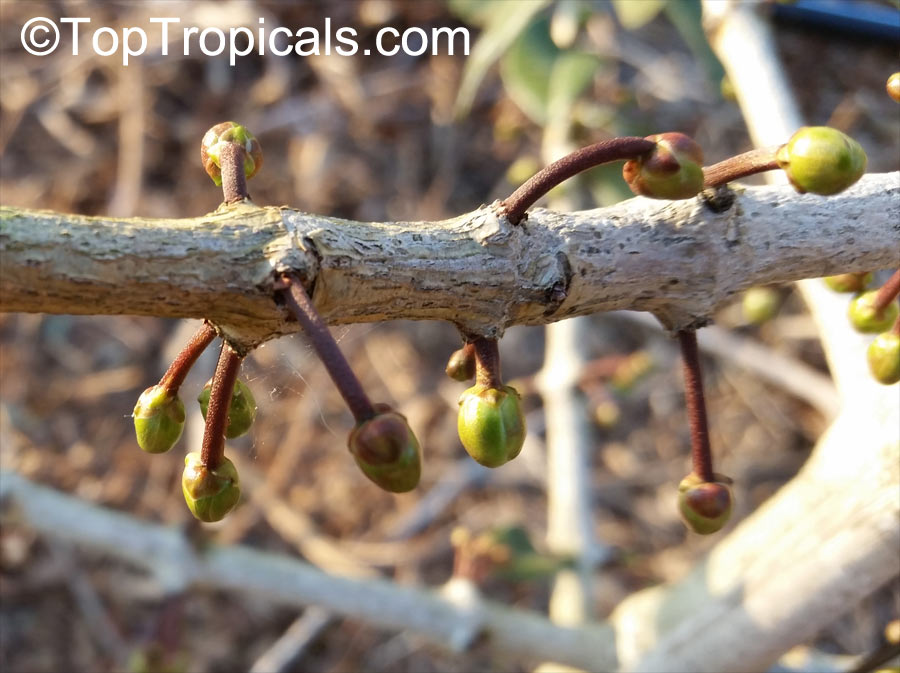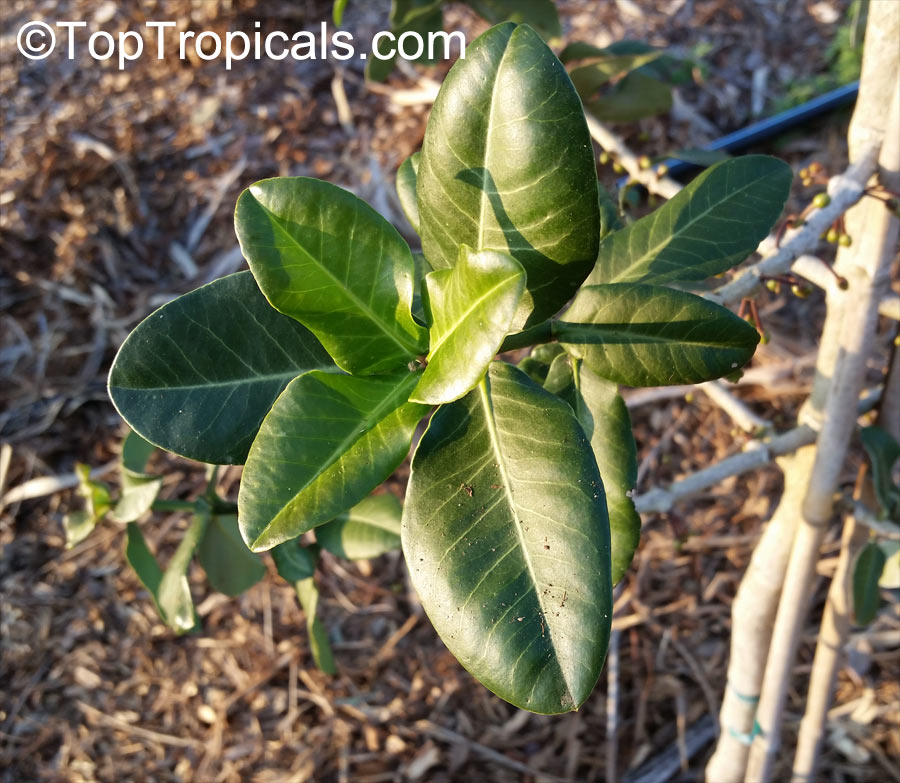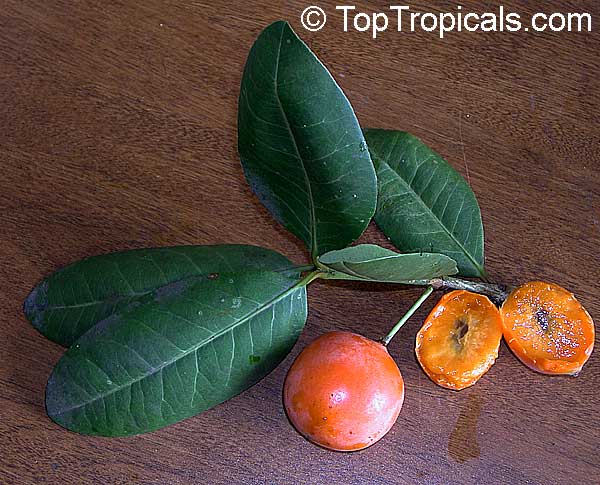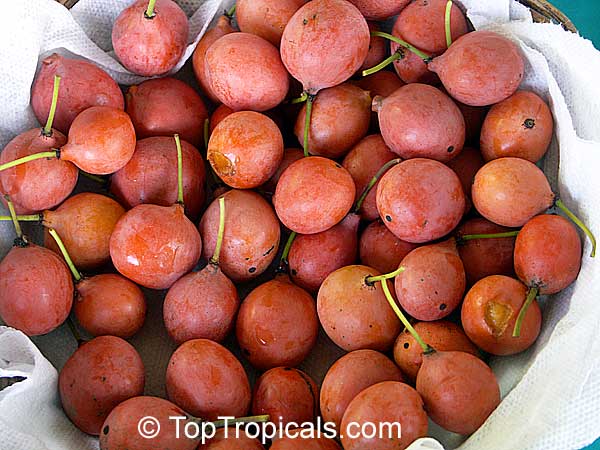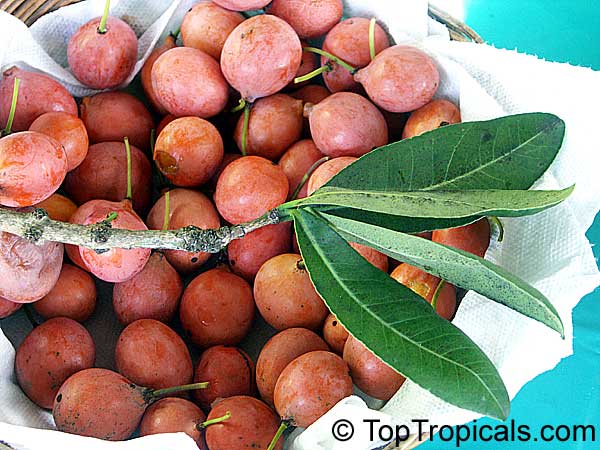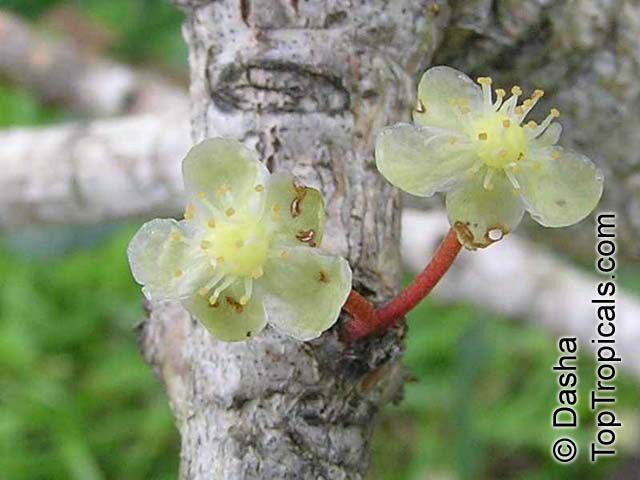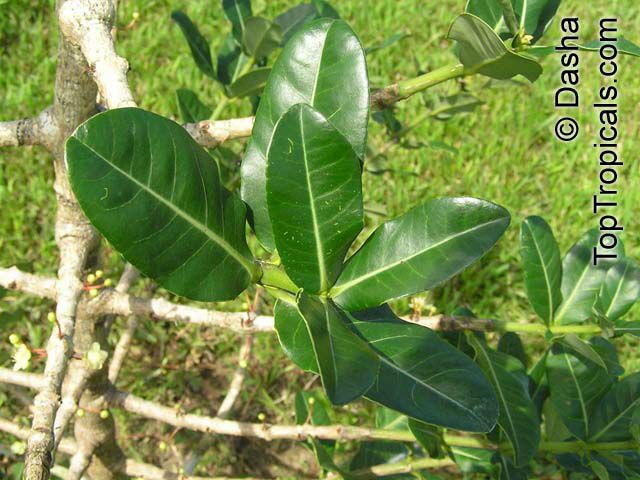Rheedia - Plant Encyclopedia Results
Top Tropicals Plant Encyclopedia
| Number of plants found: 8 |
Botanical names: Garcinia megaphylla, Garcinia macrophylla, Rheedia macrophylla, Garcinia magnifolia, Rheedia magnifolia
Common names: Bacuru Pary, Bacuripari
Family: Clusiaceae / Guttiferae
Origin: South America







In some sources Garcinia megaphylla is indicated as synonim of Garcinia magnifolia.
It is found in Brazil in 1841, in the Amazonian montian forests.
Bacuripari is an evergreen tree with stiff, leathery leaves, growing 20-25 ft tall.
The fruit is very popular within its native range. It is commonly gathered from the wild, and is also sometimes cultivated, especially in home gardens, for the fruit which is widely sold in native markets. It is eaten raw or made into jams. The white, aril-like pulp is agreeably subacid. It has many medicinal properties.
Botanical names: Garcinia portoricensis, Rheedia portoricensis
Common names: Reedia, Garcinia
Family: Clusiaceae / Guttiferae
Origin: Puerto Rico





Rare, Puerto Rican fruit that is closely related to Rheedia aristata (Cuban Mangosteen).
Very slow grower; attractive ornamental.
Botanical names: Rheedia aristata, Rheedia macrophylla
Common names: Cuban Mangosteen, Garcinia
Family: Clusiaceae / Guttiferae
Origin: Mexico through Panama







Related to the mangosteen, the madrono remains a relatively unknown, but attractive fruit. A small tree, usually only to 5-15ft, but taller in its native range. It is much hardier than its famous relative the mangosteen, and can survive short periods of temperatures below 32F. Trees are very salt tolerant, but not too tolerant of acidic soils. Slow growers and can be maintained for container culture. Propagation: Usually by seed.
Botanical names: Rheedia brasiliensis, Rheedia laterifolia, Garcinia laterifolia
Common names: Bakupari, Camboriu
Family: Clusiaceae / Guttiferae
Origin: Brazil






Rheedia brasiliensis (Bakupari) is a small tree which grows 10-20 ft in height and is a native to Brazil. It is a semi-shade loving plant and needs regular watering in order to thrive. This ethnomedical plant has an edible fruit that is a rich source of many healthy benefits. The fruits have a subacid white pulp with an excellent flavor and can reach up to 1-1/2 inches in length. The orange-yellow, pliable, and leathery skin is easy to remove. Inside two rounded seeds are enclosed amongst the aril-like, translucent pulp. The tree blooms in December and matures in January and February, producing an abundance of fruits.
In addition to its delicious flavor, the fruit of Rheedia brasiliensis is used to make sweetmeats or jam. The seeds also contain 10 percent oil by weight, which is used in Brazil in poultices to treat wounds, whitlows, tumors, and an enlarged liver. An infusion from the fruit pulp has a narcotic action that mimics nicotine effects.
Grown in USDA Zone 9-11, Rheedia brasiliensis (Bakupari) is easy to care for. It prefers full sun exposure, but can also tolerate semi-shade. This small tree needs regular watering and well-draining, slightly acidic soil. In colder regions where it may not be possible to plant outside, the tree can be grown in a pot with similar care requirements.
Botanical names: Rheedia edulis, Garcinia intermedia, Calophyllum edule
Common names: Monkey Fruit, Sastra, Cherry Mangosteen, Lemon Drop Mangosteen
Family: Clusiaceae / Guttiferae
Origin: Central America (Belize, Costa Rica, Nicaragua, Panama)








Looking for a fun, tropical addition to your small garden or patio? Garcinia edulis might just be the perfect fit!
Known as Lemon Drop Mangosteen or Madrono, this small, very slow growing tree brings both beauty and deliciousness to your rare fruit collection.
The tree is a compact, evergreen gem with glossy green leaves that look great year-round. Its small, bright yellow-orange fruits are about the size of a golf ball, with translucent white pulp inside. The taste? A refreshing burst of sweet and sour - like a lemony tropical candy!
These little fruits are not only great for snacking fresh but also make awesome juices, jams, or desserts. Plus, the tree is pretty low-maintenance - just give it some sun and water, and it's happy.
Close related species -Garcinia livingstonei (Imbe).
Known as Lemon Drop Mangosteen or Madrono, this small, very slow growing tree brings both beauty and deliciousness to your rare fruit collection.
The tree is a compact, evergreen gem with glossy green leaves that look great year-round. Its small, bright yellow-orange fruits are about the size of a golf ball, with translucent white pulp inside. The taste? A refreshing burst of sweet and sour - like a lemony tropical candy!
These little fruits are not only great for snacking fresh but also make awesome juices, jams, or desserts. Plus, the tree is pretty low-maintenance - just give it some sun and water, and it's happy.
Botanical name: Rheedia longifolia
Common names: Charichuela, Bacuri Azedo, Sour Bacuri, Bumpy Lemon, Garcinia
Family: Clusiaceae / Guttiferae
Origin: Tropical America






Fruit resembles a bumpy lemon, with an interior like lemony cotton candy. Yellow, sometimes spotty fruit with a white-translucent pulp having an aromatic, acidic flavor. Related to the mangosteen, it remains a relatively unknown, but attractive fruit. A small tree, usually only to 5-15ft, but taller in its native range. Much hardier than its famous relative the mangosteen, and can survive short periods of temperatures below 32F. Trees are very salt tolerant, but not too tolerant of acidic soils. Slow growers and can be maintained for container culture. Propagation usually by seed.
Very similar species - Garcinia acuminata, or G. madruno (Rheedia madruno).
Related species: Rheedia macrophylla, Rheedia Aristata (Cuban Mangosteen).
Botanical name: Rheedia madruno
Common names: Madrono, Madrone, Bakupari, Garcinia
Family: Clusiaceae / Guttiferae
Origin: Wet rainforest regions from Southern Mexico through Panama







Yellow fruit with a white-translucent pulp having an aromatic, acidic flavor. Related to the mangosteen, the madrono remains a relatively unknown, but attractive fruit. Eaten fresh, but can also be made in to jams and jellies. A small tree, usually only to 5-15ft, but taller in its native range. The madrono is much hardier than its famous relative the mangosteen, and can survive short periods of frost. Trees are very salt tolerant. Madronos are slow growers and can be maintained for container culture.
Botanical name: Garcinia livingstonei
Common names: Imbe, Rheedia, Lowveld Mangosteen
Family: Clusiaceae / Guttiferae
Origin: Mozambique, Zimbabwe Northern Botswana






Garcinia livingstonei is a large shrub to small tree, growing 5-10 ft tall in warmer climates and 10-20 ft tall in more temperate climates. It is an ethnomedical plant that is native to Mozambique, Zimbabwe, and Northern Botswana. Imbe thrives in full sun, with moderate water requirements. Once established, the plant can tolerate heavy pruning and even light frosts, making it cold hardy in USDA Zone 10-11, surviving down to temperatures of 30s F.
Fruits of Garcinia livingstonei are smallish and ovoid to round, having a thick and durable rind, which can range in color from orange to yellow. Its flesh is made up of an edible, acid-sweet whitish pulp that surrounds a small seed. The fruit is considered rich in vitamins and minerals, with a high nutritional value. When mature, a Lowveld Mangosteen can produce hundreds of fruits for harvesting.
From a plant care perspective, Garcinia livingstonei does not have particularly specific requirements. In colder regions it can easily be grown in a pot that can be moved indoors during periods of extreme cold. The plant should be pruned to control growth and encourage the formation of lateral branches, providing the stem with a bushy, globe-like shape that is aesthetically pleasing.
Recommended Fertilizer: SUNSHINE C-Cibus - Crop Nutrition Booster
SUNSHINE-Honey - sugar booster
Use link to repeat this search:
https://toptropicals.com/cgi-bin/garden_catalog/cat.cgi?find=Rheedia&search_op=and&keyword_op=and&language=e&number=10
&no_change_lang=1&user=tt&sale=1&first=0
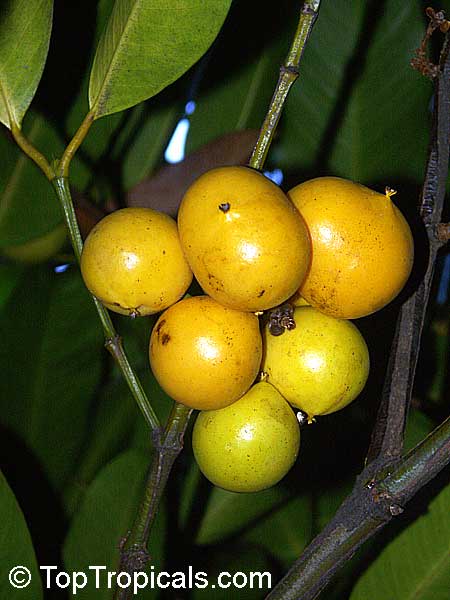
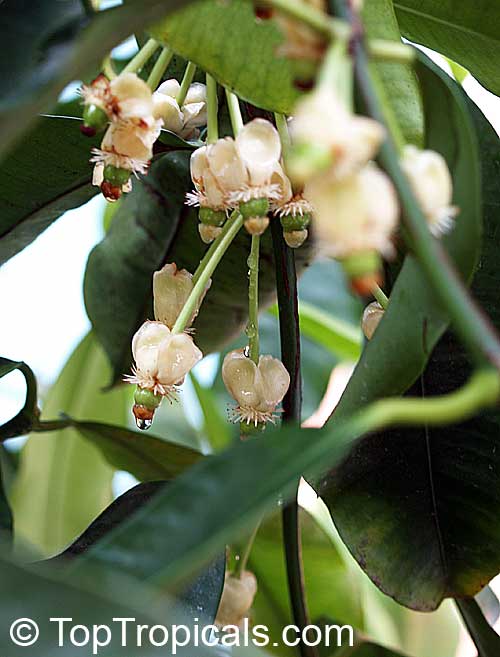
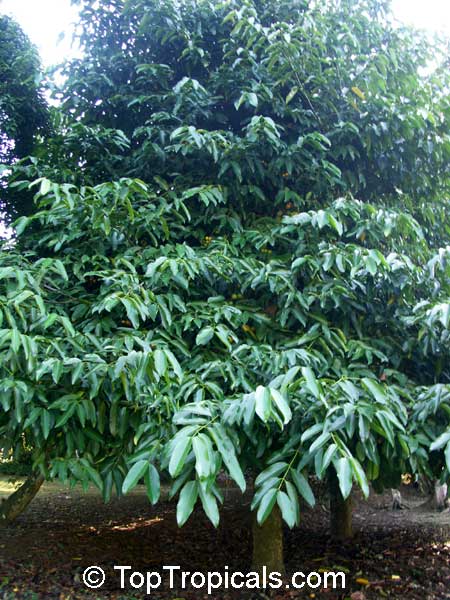
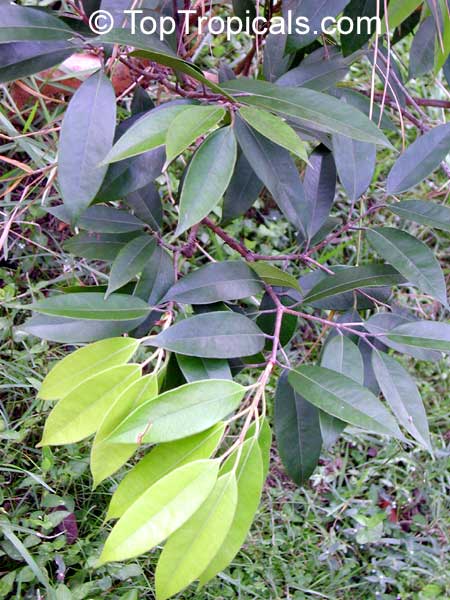
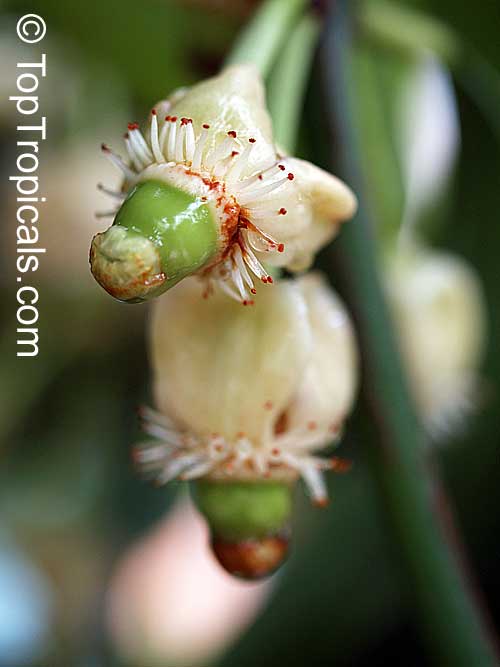
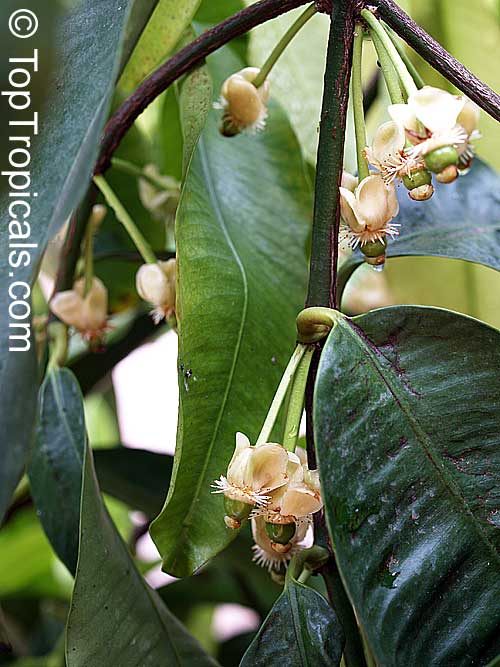
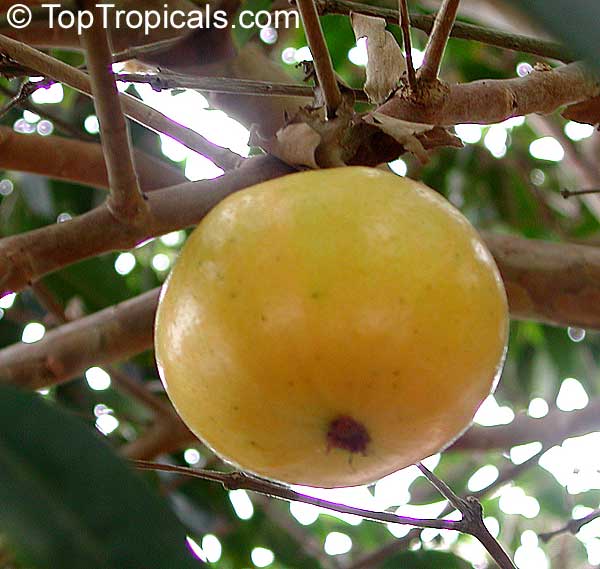

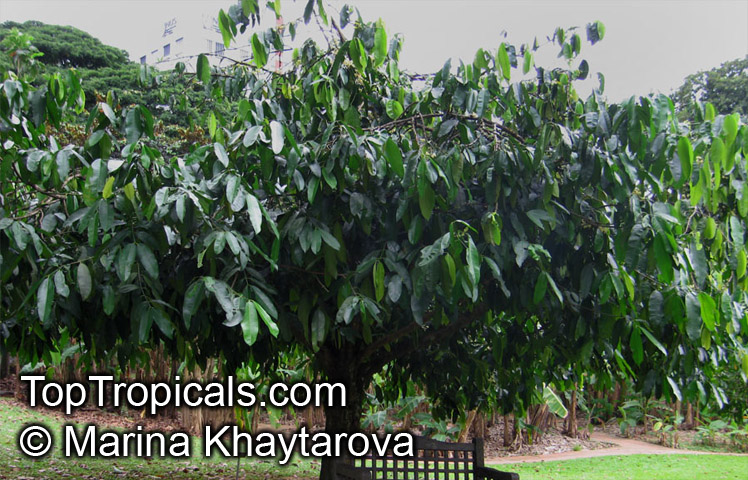
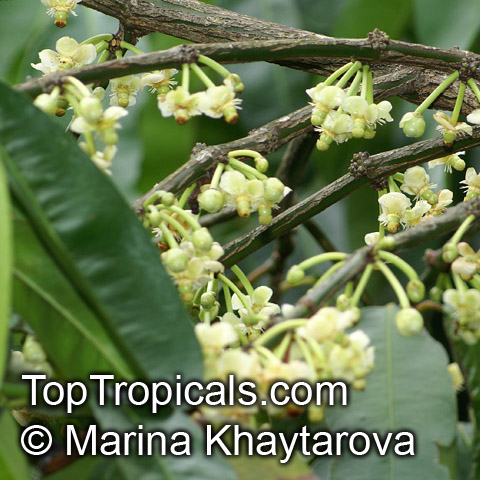
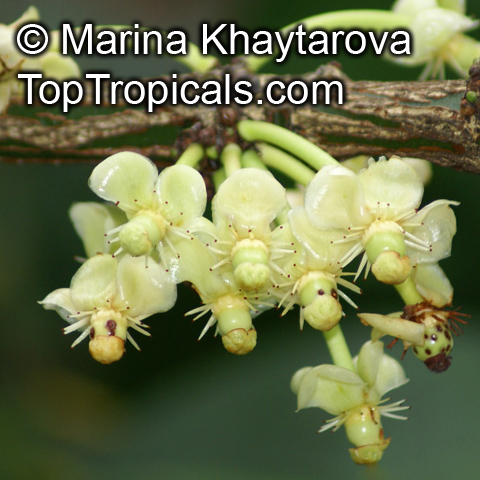
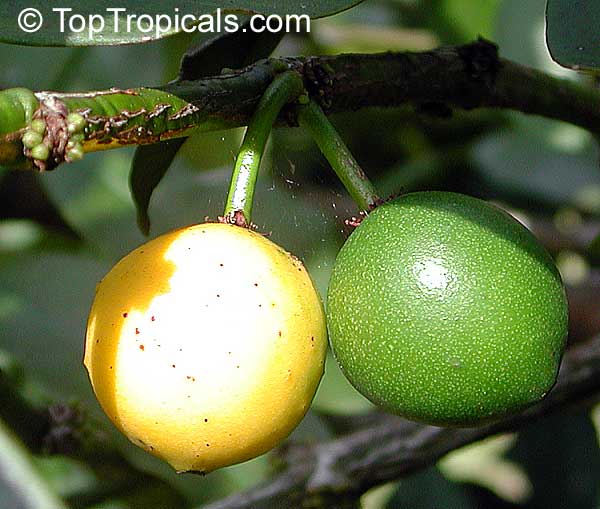
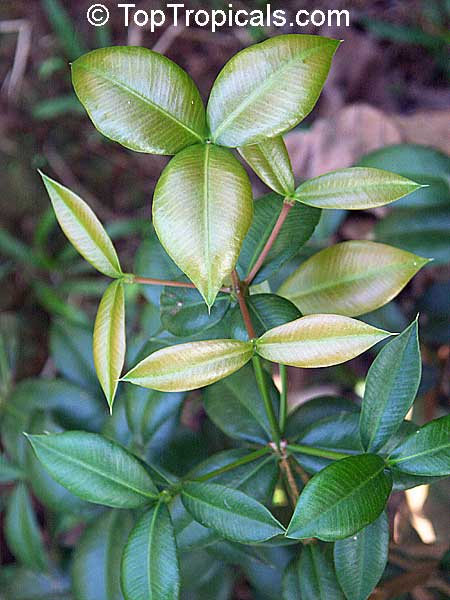
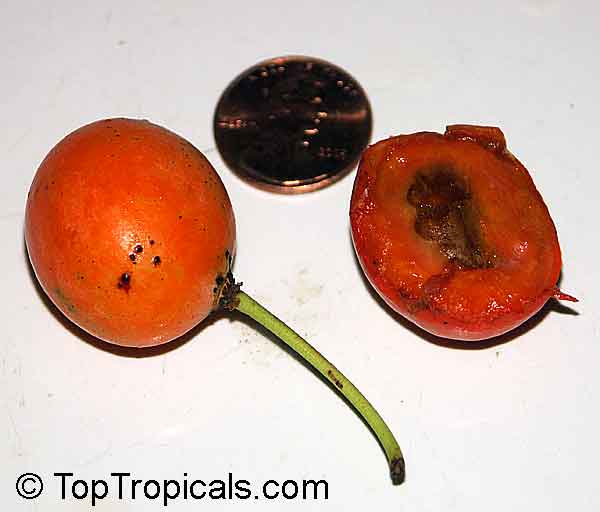
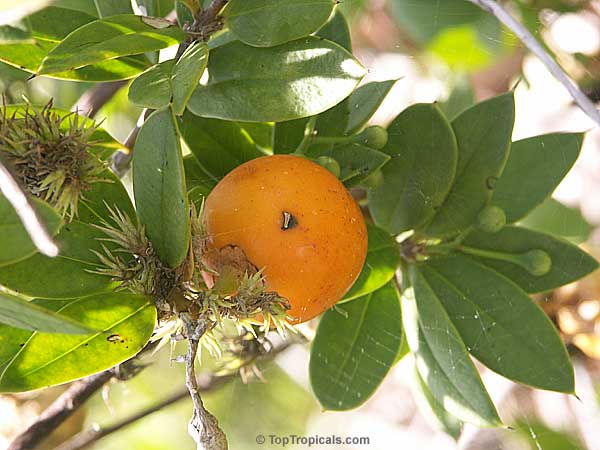
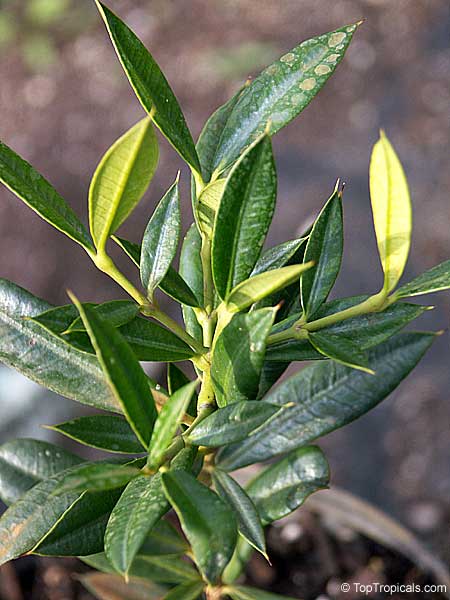
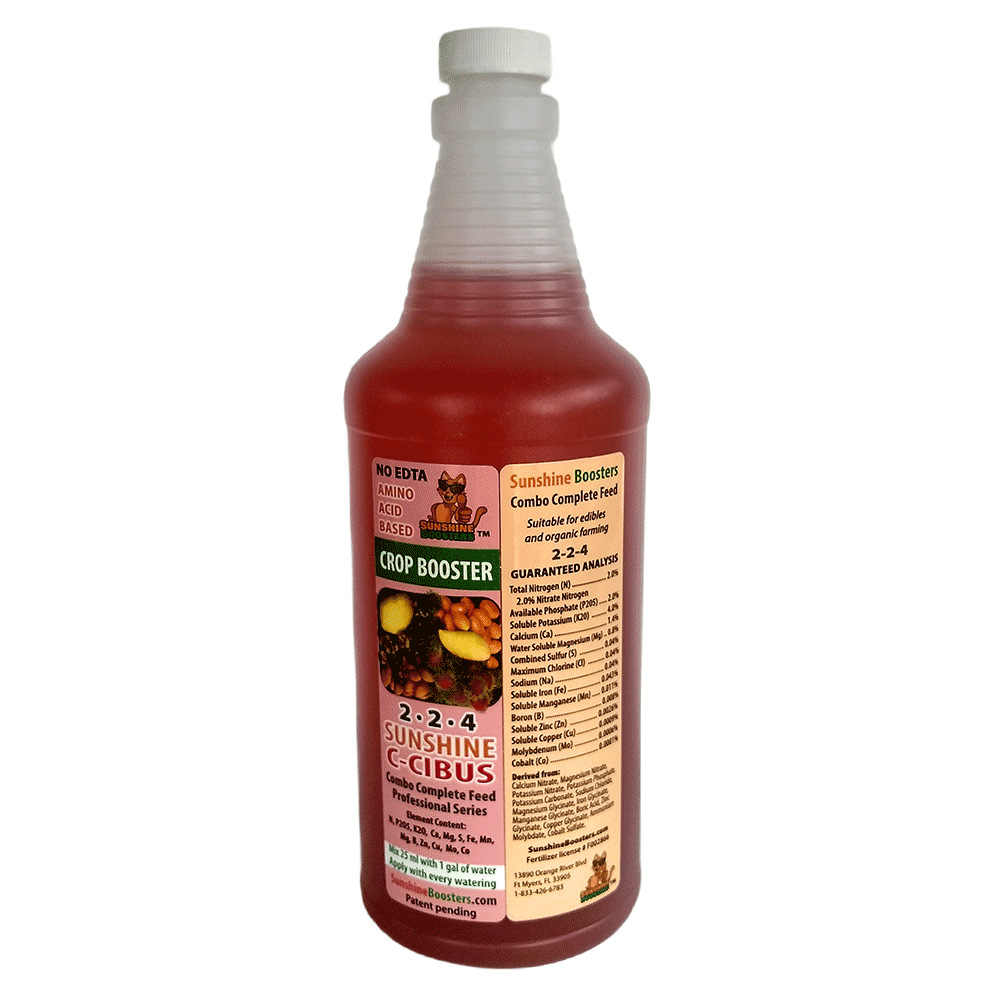 SUNSHINE C-Cibus (NPK 2-2-4) - Crop Booster for every watering.
SUNSHINE C-Cibus (NPK 2-2-4) - Crop Booster for every watering. 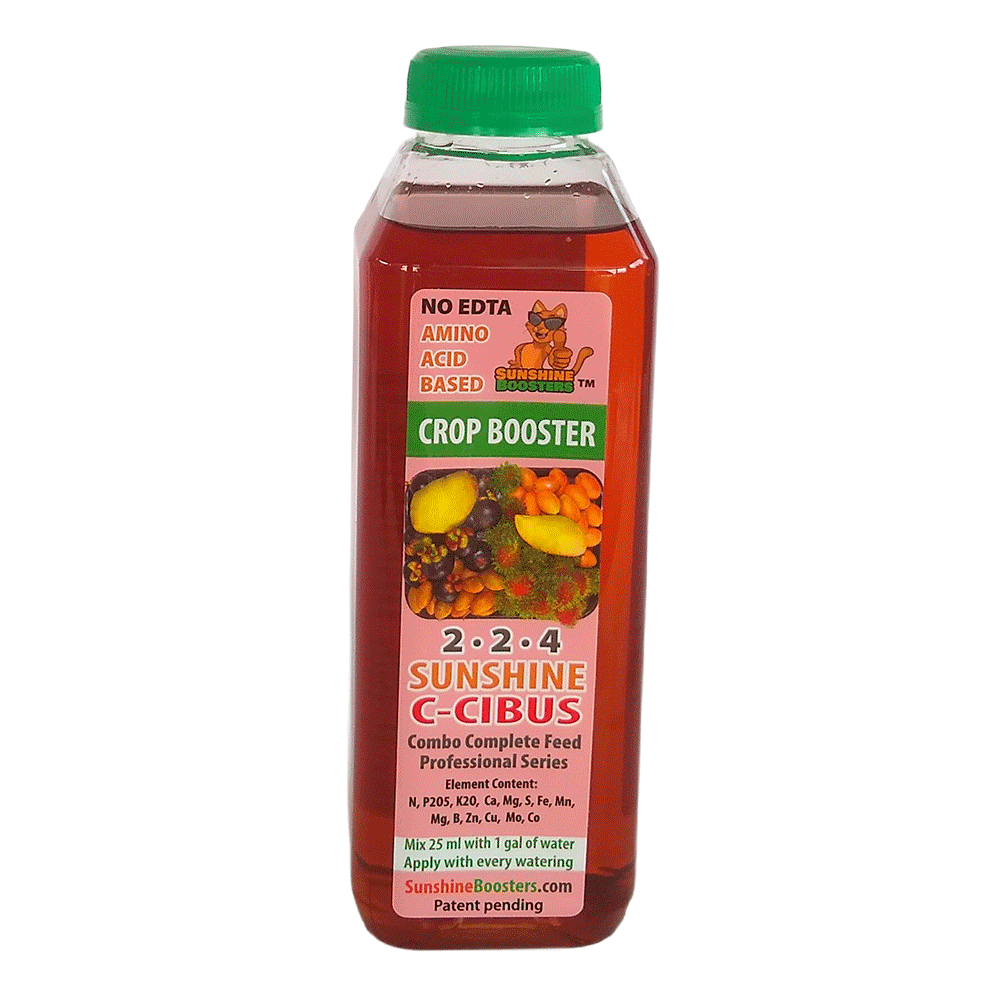 SUNSHINE C-Cibus (NPK 2-2-4) - Crop Booster for every watering.
SUNSHINE C-Cibus (NPK 2-2-4) - Crop Booster for every watering. 